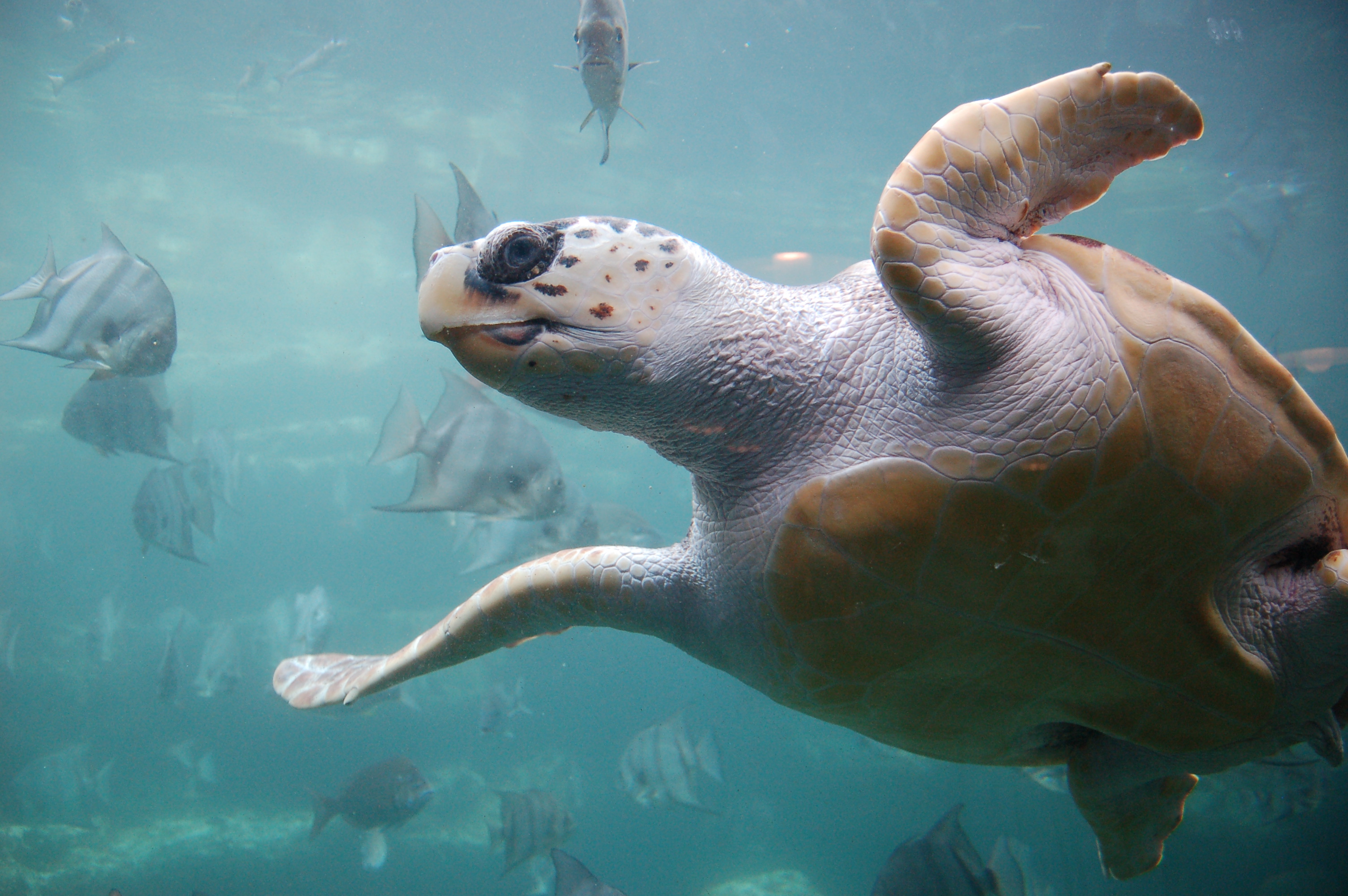
Sea turtle, photo by Ukanda. Image: wikimedia.
Deep – from 650 to 3,200 feet; vast – composing 71% of Earth’s surface; unknown – only 15% of it is mapped; alive – 10 billion metric tons of marine life; treasure-filled: with troves of diamonds (De Beers is already there, with a $157 million dollar vessel sweeping the Atlantic seafloor off the coast of Namibia, and minerals (the Clarion-Clipperton Zone, in the Pacific from Mexico to Hawaii, contains cobalt, copper, manganese, nickel, zinc), what was once called the Twilight Ocean, now termed the Mesopelagic Ocean, may be the most important area of exploration of the future. Opportunities are significant and perhaps dangerous; environmental agreements are essential and increasingly urgent. Precedent, and lessons learned, might be seen in the Treaty of Tordesillas, the founding of Singapore, or even the Outer Space Treaty. Who owns what might be found in the deep blue? How are the rights of the original denizens protected?

The future of blue, considered in the G7 Summit (or perhaps termed the G6+1), may advance foundational policy regarding Oceans, Seas, and Coastal Communities. The Charlevoix Blueprint for Healthy Oceans, Seas, and Resilient Coastal Communities Communique includes a statement on IUU fishing with a vessel certification and identification program. The Communique also includes an Annex: for the first time in history, there is an Ocean Plastics Charter: “We, the Leaders of Canada, France, Germany, Italy, the United Kingdom, and the European Union taking a “lifecycle approach to plastics stewardship on land and at sea.”
Interested in the strategic future of the blue? The International Seabed Authority, established by United Nations 1982 Convention on the Law of the Sea, offers educational opportunities for polymetalic exploration with two Offshore Internships in the first quarter of 2019. Focus? Clarion-Clipperton Zone. Application deadline: 28 June 2018. Get involved now.
For More:
Charlevoix Blueprint for Healthy Oceans, Seas, and Resilient Coastal Communities. https://g7.gc.ca/en/official-documents/charlevoix-blueprint-healthy-oceans-seas-resilient-coastal-communities/
International Seabed Authority. “Global Sea Mineral Resources Internship 2019” https://www.isa.org/jm/formación/gsr-contractor-training-program/
Packard, Julie and Chris Scholin. “The Deep Sea May Soon Be Up for Grabs.” 8 June, 2018. New York Times.
Pew Trusts. “The Clarion-Clipperton Zone: Valuable minerals and many unusual species.” Fact sheet: 15 December 2017. http://www.pewtrusts.org/en/research-and-analysis/fact-sheets/2017/12/the-clarion-clipperton-zone/.
Thomson, Peter. United Nations Special Envoy for the Ocean. “The G7 should take the lea on ocean targets for 2020.” World Economic Forum, 8 June 2018. https://www.weforum.org/agenda/2018/06/the-g7-should-take-the-lead-on-ocean-targets-for-2020/.
Trudeau, Justin. Prime Minister of Canada. “World leaders coming together at the G7 Summit to protect our oceans, seas, and coastal communities.” 1 June 2018. https://pm.gc.ca/news/2018/06/01/world-leaders-coming-together-g7-summit-protect-our-oceans-seas-and-coastal/.
United Nations. Convention on the Law of the Sea. http://www.un.org/Depts/los/convention_agreements/convention_overview_convention_htm/
Building the World Blog by Kathleen Lusk Brooke and Zoe G Quinn is licensed under a Creative Commons Attribution-NonCommercial-NoDerivs 3.0 Unported License

